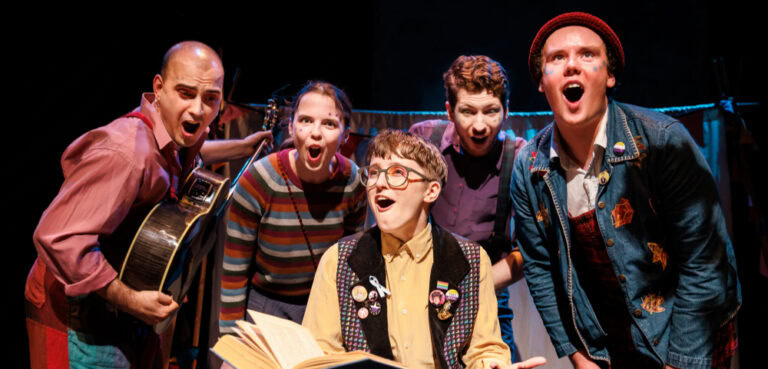
Grand church send-off for pedophile priest
* All names of the victims and their families have been changed to protect their identities. Pseudonyms do not relate to the names of real people.
The wise guys are out in force. So is most of the Melbourne archdiocese. Sixty of its 92 priests, and no fewer than four of its bishops, have come together to bury their brother priest, Father Nazareno Fasciale, a man of whom, one of the bishops claims, the church is immensely proud.
The ceremony itself -“ which will cost the Church $114,000 -“ bears the mark of meticulous planning: magnificent floral arrangements, superb choral performances, Gregorian chants and preludes by Bach. It is all crafted to impress.
On hand as master of ceremonies is Fr Denis Stanley, the archbishop’s private secretary. The principal celebrant, Peter Connors, the then vicar-general and auxiliary bishop for the Western Region, is there to give the homily. There to serve communion are Monsignor Denis Hart -“ the future archbishop of Melbourne -“ and Msgr Gerald Cudmore, who knew Fasciale from his days in the seminary together, and who had three years prior interviewed three of Fasciale’s victims.
And sitting on the altar at the left of the bier amid the floral tributes is Dr George Pell, who will at a press conference some time later, reluctantly concede that he was indeed present, but only to pray for the sins Fasciale had committed in life.
Fasciale was never brought to justice for his sins even though they had been well known to church authorities for over 40 years. Fasciale was charged on 27 December 1995 with multiple counts of indecent assault and gross indecency on four victims and remanded to appear in court on 12 February 1996, but the matter was later adjourned. Fasciale died of a coronary occlusion one week before he was due to appear in court. However, according to Senior Detective Gary Carson, who was in charge of the investigation, Fasciale had confessed to sexual offences against males and females.
Born in the small village of Delianuova in Italy, Nazareno Fasciale emigrated to Australia along with his parents when he was nine years old. According to Connors, when Fasciale first sought permission to be ordained it was refused, although it is unclear as to why.
He was ordained by archbishop Daniel Mannix in 1952, and posted as an assistant priest to St Mary of the Angels in Geelong. It was there in 1954 that he sexually abused Molly Stonehouse*.
He would call into our house to see my father about once a week, Stonehouse said. He came to our home one day, and I was about six years old. My father had gone off to church and my grandmother was upstairs sick in bed.
I had come down to the kitchen to fix her a cup of tea, and all of a sudden, he started to kiss me passionately on the lips, which terrified me. We treated the priests with such respect in those days, so it really frightened me. He said, -˜This is our little secret,’ and then he held my hand and walked me towards the entrance to the living room where he did it again.
Soon, she says, he was fondling her genitals during confession and, unbeknownst to her, he also began abusing her sister, Sandy*. When her father discovered what had occurred, he stormed into the deanery to see Fr Bernie O’Regan -“ one of the priests there -“ who asked the family to keep the assaults quiet for the good of the church.
Despite what had occurred, however, Fasciale remained at the parish for the next four years, when he was moved to the North Fitzroy parish. Two years later, in 1960, there was another incident at the house of a parishioner.
I was at work one day, Alice Mitchell* says, and my boss came in and said, -˜I think you’d better take this phone call.’ So I did, and it was [my daughter] Frances*. She was beside herself, screaming half out of her wits. I asked her what had happened and she said that Fr Fasciale had assaulted her in our own home while my father lay sick.
When I got home, she was stiff as a board. The church was down the street, so I marched in to see Fr Fasciale and said, -˜How could you?’ He admitted it straight up, and you know what he said? He said that he had feelings like any man, that he had needs. I told him that he had given up those feelings to serve the church, and then he started bawling his eyes out.
She complained to Fr Tom Little, the parish priest, and finally, to Msgr Lawrence Moran, an aide in archbishop Mannix’s office. It was all to no avail.
Fr Little came to our door some time later, and he was frightened and shaking. He told me that Fasciale had owned up to what he had done, and he begged me not to tell anyone for the sake of the church. I said that something had to be done, and he promised that Fasciale would be moved.
But a week later when we went to Mass, he had not been moved at all, and he approached us both in the playground. Frances started screaming. He had a box with him and he tried to give it to her. I opened the box later, and it was a statue of Our Lady of Fatima. I recognise it now as a peace offering, and it was beautiful, but I could not look at it. Every time I did, I saw Fasciale’s face.
The next day, I went to Msgr Moran, and I told him what had happened, and he just didn’t want to know about it. He basically showed me to the door. He told me to go home and to forget about it. We had to move house in the end, because Frances refused to go to school or to church any more. So, we moved.
The church, however, did nothing. Despite Mitchell’s complaints, Fasciale remained at the parish for another two years, before being moved on to other parishes. Each time there was a complaint from outraged parents, he was simply moved on to another parish where he found new victims.
In 1992, Sandy Stonehouse* decided to act. She made an appointment to see bishop Hilton Deakin -“ the then vicar-general -“ about it. I think they thought it was a bit of a joke, she says There were two other priests present. One was sitting there taking notes, and the other just sat there and said nothing. It was very intimidating, but I guess that was the whole idea.
I told him that I wasn’t happy with what was going on, and that I wanted Fasciale removed from his position as parish priest in North Fitzroy, but he said he couldn’t do that. When I insisted, he said blithely that he’d look into it. Nothing happened, though.
It is not a meeting which Deakin recalls. I frankly don’t recall it, he says. When you have the capacity to meet dozens of people in any given day, that is what happens. I can’t think of anyone that I met during that time who really sticks in my mind -¦ The name doesn’t ring a bell. Sandra Stonehouse*. Hmm. No. I don’t recall her.
By a bizarre coincidence, in 1993 Stonehouse met Frances Mitchell* at a hospital where she was working, and once they discovered that they had been molested by the same priest, Stonehouse corralled Mitchell into accompanying her and her sister Molly into seeing the then vicar-general Msgr Gerald Cudmore.
It was the first of two meetings. The first meeting lasted about an hour, Molly says. I told him exactly what had happened to us, and he asked me whether I could write it down there and then, so I did. I gave that to him. He asked Sandy and I what we wanted to happen, and we said that we wanted Fasciale out of the priesthood. I don’t know how long afterwards the second meeting was, or how it came about, but at the second meeting, Fasciale suddenly appeared.
Sandy was angry, and so was Frances, but I just looked at him, and I felt pity. He obviously needed psychiatric help and didn’t get it. I didn’t say anything to him, but Fasciale told us that he couldn’t remember doing any of the things that we were accusing him of, but that if he had, then the devil must have made him do it.
Cudmore did ask us, away from Fasciale, whether the Church could retire him due to ill-health, rather than expose him for the real reason. He begged us not to make waves; not to tell the other parishioners. Fasciale asked us to think of his family, and being na?, we went along with it, believing that the church would do the right thing by us -¦ I regret doing that now. I really do.
But when asked about it, Cudmore does not recall meeting any of them, nor does he remember writing two letters to Molly Stonehouse in 1994.
In the first letter, dated 10 February 1994, he corrected punctuation mistakes by hand, thanked Stonehouse for her faith in him and urged her to show courage in the face of adversity.
In a second letter six months later, he advised her that Fasciale had agreed to pay $4,000 in counselling costs from his limited resources and asked her to sign an appropriate release indemnifying Fasciale from any further claim.
When shown the letters, Cudmore asks for the tape recorder to be turned off, and stares at the letters for a long time. They’re very interesting, he says finally.
When asked why he had served Communion at the funeral when he had spoken to Fasciale’s victims and knew that, had he lived, Fasciale would have been the subject of court action, Cudmore replies, Yeah well, I don’t see anything really bad about [going to the funeral] -¦ I just felt sorry for the poor bastard.
In April 1997, Molly Stonehouse sought a meeting with Dr George Pell -“ the new archbishop -“ to share her concerns about Fasciale. However, she was informed in writing by Msgr Denis Hart that a careful consideration of the archbishop’s Diary indicates that it is not possible for an appointment to occur.
Offended, she wrote to Pell directly, who wrote to her in February 1997, assuring her of a special place in my prayers but refusing to see her or her sister.
He would also write to Alice Mitchell. We received a letter from George Pell asking Frances what she would like done about Fasciale, Mitchell said, and she wrote back and said that she would like for him to be defrocked. He wrote back some time later and said that he had been defrocked. Not that he was going to be; that he had been. I saw that letter with my own eyes, because Frances showed it to me.
Pell declined to be interviewed, but retired bishop Noel Daly, who was also on the altar at Fasciale’s funeral, was more than willing to talk. I have a vague memory that I was told of the investigations into him, but I was not aware of those to any extent until after he died. Rather sadly, as I was leaving, a lady came up to me and I wound the car window down and she said, -˜Fancy you coming to the funeral after what he did to the children.’ I asked her what she was talking about because I really didn’t know, and I was quite stunned when I heard later the extent of what he’d done.
I probably would not have gone to the funeral had I known what he was alleged to have done prior to going. I can’t say definitively whether I would have gone or not. It’s a very sad thing, and it does harm the church. There’s no question.
Connors -“ who is now the bishop of Ballarat and who was Fasciale’s direct superior in the mid-90s -“ is not quite so sanguine. I asked him why he agreed to give the homily in which he characterised Fasciale as a good friend and devoted pastor and why he had said that the church was immensely proud of him.
It was a long time ago, he says, and I can’t remember what I said. We had a printed text, though, because I was aware that there were investigations taking place into his conduct at that stage, and so I was guarded about what I said. I was certainly speaking from a printed text. That text was printed up and sent to each of the bishops before the funeral.
I was an auxiliary bishop, not the archbishop of Melbourne. I’d like to make that point. I was very careful in what I wrote, and I was confident that I had done a good job. I talked about his ministry and his family. I did not speak ill of him, but I certainly skirted around the issues.
Two weeks after the funeral, an obituary appeared in the diocesan magazine Kairos -“ whose board of management included bishop Deakin -“ which was fulsome in its praise of Fasciale. Referring to his ministry as special, it claimed that he had been totally committed to the spiritual and pastoral needs of his people whom he loved.
Alice Mitchell snorts when I read her this, but she is not surprised. You know, she says there was a huge picture of him draped over the coffin. It was sickening. They had a high Mass for him, mind you. A high Mass. All these priests sitting alongside these wise guys in natty suits. When the bishop spoke and said that this was a man who had devoted his life to the service of God for 40 years, I almost exploded. He didn’t serve God. He served himself with our child.
You know, they sent him to Italy for a holiday right before he died -“ all expenses paid. He was in Italy living high on the hog, while we were chewing over what he had done to my daughter.
When I tell Molly Stonehouse of Mitchell’s comments, she laughs. They’re a bunch of hypocrites, she says. They walked out in this bloody procession, all pomp and pageantry. It was outrageous.
There were a group of priests standing in front of us, and I told them to have a good look, that we were Fasciale’s victims, and you know what they did? They laughed and turned their backs on us. They laughed. They are supposed to be men of God, who are supposed to have compassion for their fellow human beings, and they are supposed to be there to help us. All they were doing was showing us their contempt, and how big a circus that funeral really was.









